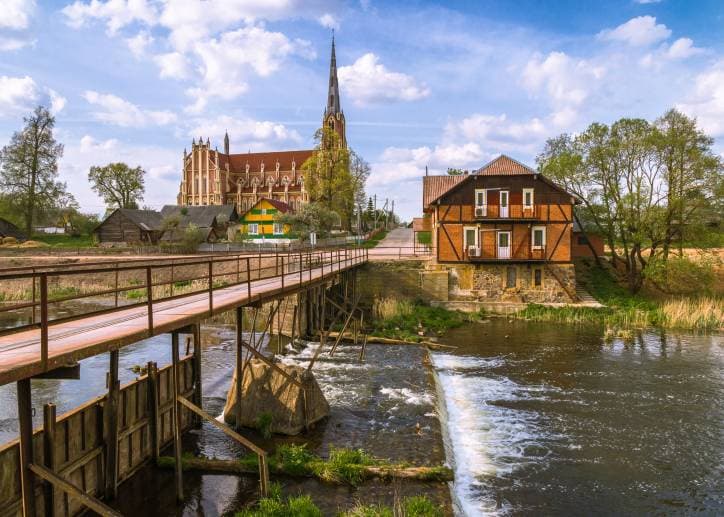Gervyaty. The building of the former watermill.
Landmark
Belarus, Grodno region, Ostrovetsky district, Gervyaty, Embankment street, 7
Description
Near the majestic Church of the Holy Trinity in Gervyaty, on the picturesque banks of the Losha River, there is a remarkable building – a former watermill. This building, presumably erected in 1914, stands out for its unusual half-timbered architectural style in Belarus, which is widespread mainly in Germany.
Categories
Historical
Architectural monument
Comments
Reviews to the Place
1Ольга Ерёменко
07.08.2025
The former building of the watermill in Gervyaty.
The former building of the watermill in Gervyaty dates back to the 19th century. More precise information about the time of its construction has not been preserved.
By order of the owner of the estate, Vaclav Domeyko, the mill was equipped with the latest technology of the time. Lifting mechanisms were installed here to facilitate the work of workers, as well as millstones that made it possible to produce flour of various grades, including the finest, ideal for making refined muffins. Special attention was paid to the strength of the structure: the foundation and walls were carefully reinforced to withstand washouts and flooding.
After nationalization during the Soviet period, the mill continued to function until the middle of the 20th century, providing flour to the neighborhood. However, with the development of new technologies, its use became economically impractical and the building gradually fell into disrepair.
In the 1980s, the mill was in poor condition, but in the early 2000s, its restoration began, which breathed new life into the old building. After a thorough renovation, a cozy cafe opened here, which quickly gained popularity among both locals and numerous tourists.
Now it is not just an architectural monument, but also a place where you can relax, enjoy the atmosphere of the past and taste dishes made from local flour, perhaps even ground on those very ancient millstones.



